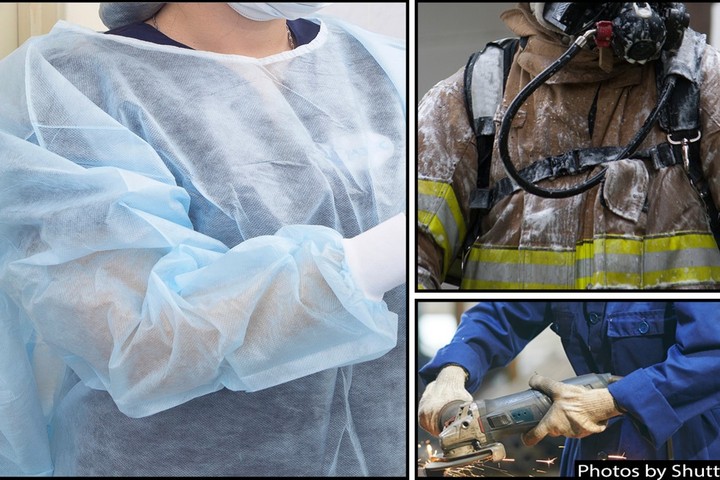
Personal protective equipment (PPE) is crucial for employees in many professions. Safety standards for PPE are mostly set by consensus standard development organizations, such as the National Fire Protection Association (NFPA), American Society for Testing and Materials International (ASTM International), and the Association for the Advancement of Medical Instrumentation (AAMI). These organizations also publish guidance documents for selection, care, and maintenance of PPE. These documents can also be incorporated into regulations for specific types of PPE. For example, the Food and Drug Administration (FDA) has regulations for medical devices such as gowns and recognizes multiple ASTM International and AAMI standards.
Adequately equipping workers with appropriate PPE has always been of vital importance. We saw this with the COVID-19 pandemic where PPE played a critical role in ensuring the safety of citizens and workers. However, reliable and safe PPE is just as important in non-medical settings. Regardless of the field, all protective gear needs to meet a certain set of criteria that ensures safety across different body types, and accounts for different work functions, environments, and hazards.
PPE guidelines are an ever-evolving set of recommendations to keep the end user safe from hazards. While COVID-19 and supply scarcity forced some changes, albeit temporary, to some guidelines, the pandemic is not the sole driver of change.
Here is a closer look at some PPE standards to consider for the National Institute for Occupational Safety and Health (NIOSH) Protective Clothing Challenge.
Medical Gowns
FDA has extensive regulations for medical gowns, which protect wearers from the spread of infection or illness. The FDA recognizes some standards from AAMI and ASTM International. ASTM International, which provides standards on various materials, also contributes to the medical gown regulations recognized by the FDA.
ANSI/AAMI PB70, ASTM F2407, and ASTM F3352 provide detailed specifications about the performance of medical gowns. The former classifies gowns according to their barrier resistance performance. The latter addresses physical performance such as tensile, tear, and seam strength properties.
ANSI/AAMI PB70 defines four levels of protection for medical gowns. The lowest, Level 1, is suitable for use in minimally risky scenarios, such as basic care, standard isolation, or visitor use. The highest, Level 4, is for use during long, fluid-intense procedures and surgeries.
Coveralls
Coveralls are designed to provide 360-degree protection and cover the entire body, including the back and lower legs. Some offer head and feet protection, too.
Multiple standards are available to select appropriate coveralls for the hazards, including NFPA 1999, which covers protective clothing and ensembles used in emergency medical operations. Another applicable standard is NFPA 1990 which addresses gear used when handling hazardous materials as well as chemical, biological, radiological, and nuclear (CBRN) materials. Also, NFPA 1891 provides guidelines for the selection, care, and maintenance for a variety of coveralls used in the emergency operations.
For coveralls, ASTM F1671, which is used to determine viral penetration resistance of protective clothing also applies. Coveralls are also tested to evaluate various conditions and for many other properties, including tear, seam and tensile strength, flame resistance, puncture resistance and breathability in addition to viral penetration resistance.
Firefighter Turnout Gear
In the U.S., NFPA provides standards for PPE for firefighters. Like for medical gear, there are different standards for different types of firefighter gear. Two standards are key to PPE used in structural and proximity firefighting. NFPA 1971, for example, sets standards for protection from thermal, environmental, physical, and bloodborne pathogen hazards. NFPA 1851 provides guidelines for the selection, care, and maintenance of such equipment.
The crux of the NIOSH Protective Clothing Challenge – “Leave No Body Behind” is to find new approaches to better-fitting PPE for U.S. workers. With $55,000 in prizes, the challenge will award up to five teams for innovative ideas to address this critical need. Follow and join the challenge to submit your idea today!








